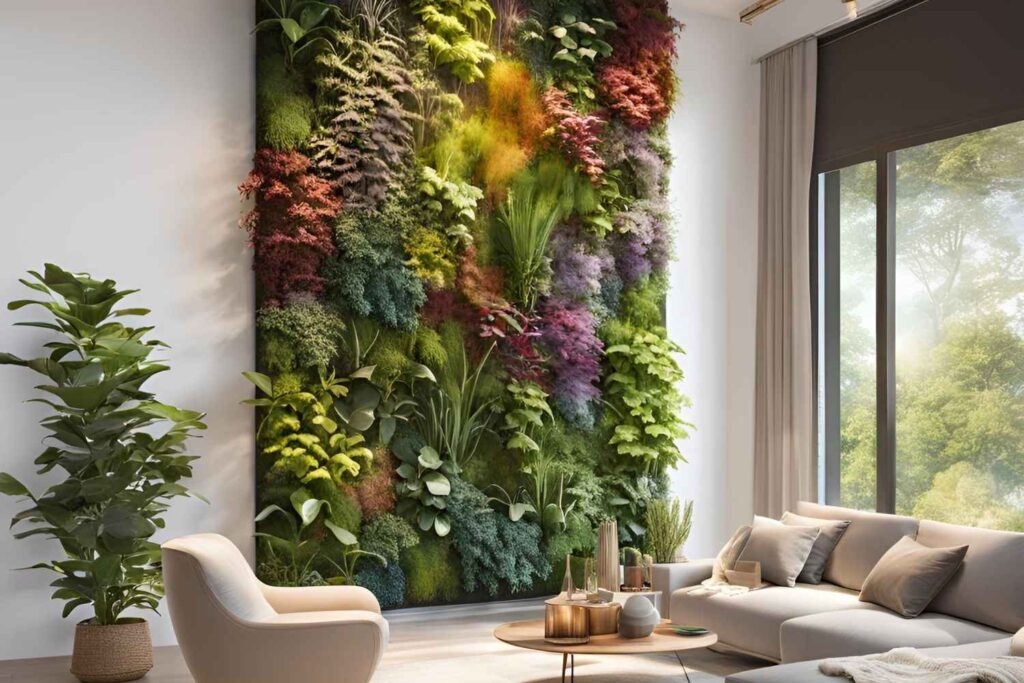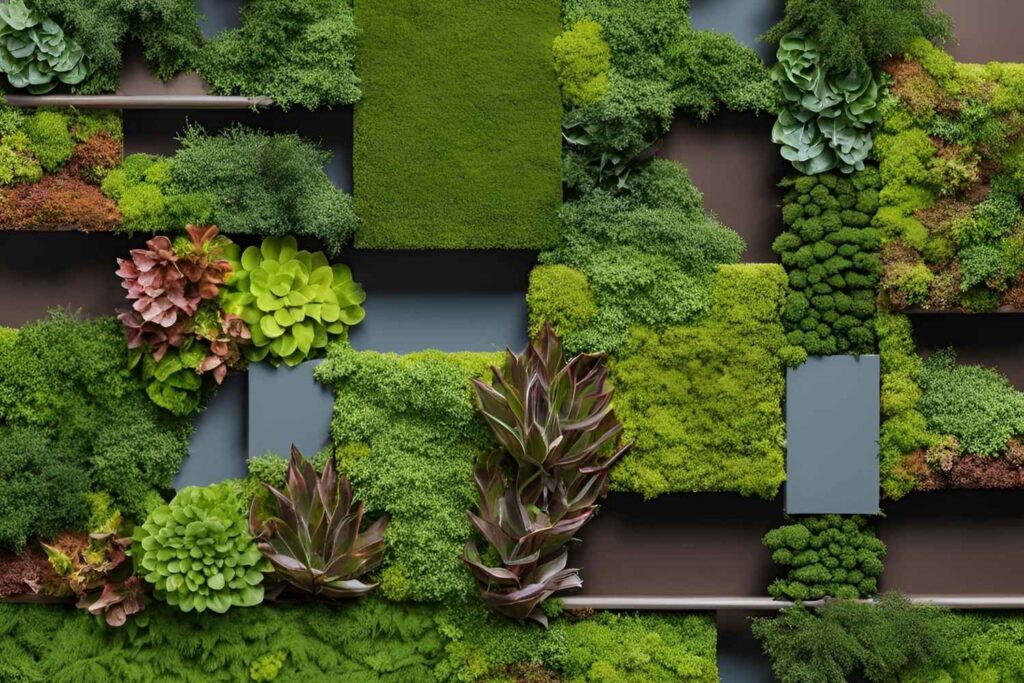Moss walls and living walls are the two most popular options for vertical gardens in green buildings. But did you know they can also work together to enhance the sustainability and beauty of a property? In this blog, we’ll explore their key differences, benefits, and how combining them can create the ultimate green building solution.
What Are Preserved Moss Walls?
Preserved moss walls are a modern green wall option made from preserved moss. Unlike traditional plants, preserved moss does not require soil, water, or direct sunlight, making it an ultra-low-maintenance solution. It’s often used indoors to create a serene, biophilic environment.
Preserved moss walls are often treated with non-toxic, biodegradable preservatives to maintain their softness and vibrancy. While they do not actively filter air like living plants, they help regulate indoor humidity and contribute to a healthier indoor environment. Additionally, preserved moss walls can contribute to LEED credits depending on factors such as material sourcing and indoor environmental quality improvements.
Best uses for moss walls:
- Indoor spaces with low light and controlled humidity
- Offices, hotels, and commercial buildings seeking low-maintenance greenery
- Areas requiring sound absorption, such as conference rooms and open workspaces
What Are Living Walls?
Traditional living walls are vertical gardens made up of real plants, grown in soil or hydroponic systems. Unlike moss walls, they actively filter air, reduce heat, and support biodiversity. Living walls require a structured irrigation system and regular maintenance, but they provide greater environmental benefits and a more dynamic look.
Best uses for living walls:
- Both indoor and outdoor applications where natural light is available
- Buildings seeking improved air quality and energy efficiency
- Urban settings where biodiversity and cooling effects are needed
Comparing the Benefits: Moss Walls vs. Living Walls
| Feature | Moss Walls | Living Walls |
| Maintenance | Minimal (no watering or soil) | Regular watering, pruning, and fertilization |
| Air Purification | Moderate (passive filtering) | High impact (active filtering of CO2 and VOCs) |
| Sound Absorption | Excellent (soft, dense texture absorbs noise) | Good (leafy surfaces can reduce echoes) |
| Best Placement | Indoor, low-light areas | Indoor & outdoor, well-lit spaces |
| Humidity Control | Yes, absorbs and regulates moisture | Varies by plant selection |
| LEED Contribution | Indoor environmental quality (improved acoustics & humidity) | Energy efficiency, air quality, biodiversity |
Why Not Both? Combining Moss and Living Walls

For buildings looking to maximize green wall benefits, a combination of moss walls and living walls can create a balanced, high-impact biophilic design:
- Layering Effect: Use moss walls in interior spaces for sound absorption and humidity regulation, while living walls thrive in well-lit areas to provide air purification and energy efficiency.
- Aesthetic Variety: The soft textures of moss contrast beautifully with the lush, vibrant greenery of living walls, creating a more engaging design.
- Custom Solutions: By integrating both, buildings can optimize sustainability goals, reduce operational costs, and enhance well-being.
Conclusion
Moss walls and living walls each have their place in green building design, but together, they create a holistic solution for sustainability and ambiance.
Want to explore how green walls can elevate your space? Contact Eco Brooklyn today to discuss the perfect living wall solution for your project.

